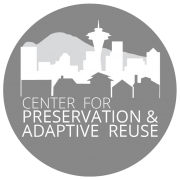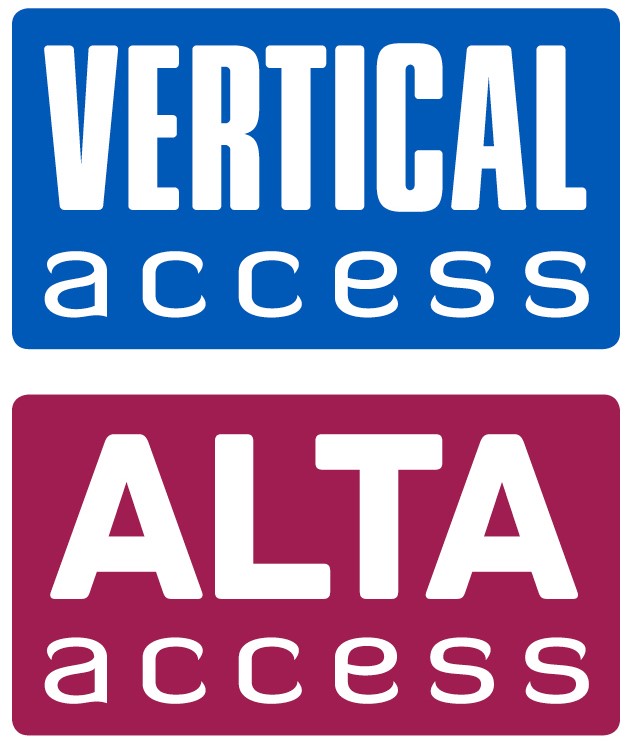2020 Unreinforced Masonry Symposium
URM Symposium - Webinar Series
Click the title to link to the recorded webinar
Webinar #1: Proactive Planning for Unreinforced Masonry Retrofits
AIA CES: 1.0 HSW
Local jurisdictions have taken a proactive approach to addressing unreinforced masonry within their boundaries. Synergy is created between planning departments, emergency management, and historic preservation professionals in order to identify risks through thorough survey and inventory efforts, and subsequent development of policies following robust public engagement. This session will focus on what two leading Pacific Northwest cities are doing to proactively plan for and address public safety and historic preservation issues with regards to the seismic retrofit of unreinforced masonry buildings. Representatives from the City of Seattle and the City of Portland will discuss potential mandatory retrofit ordinances, public outreach and engagement, and efforts to support voluntary retrofits using the “Bolts Plus” standard to relieve the most vulnerable components of URMs.
Erin Doherty, Coordinator, Historic Preservation | Seattle Landmarks Preservation Board
Matt Auflick, Community Relations Manager | Seattle Office of Emergency Management
Jonna Papaefthimiou, AICP, Planning, Policy, and Community Programs Manager | Portland Bureau of Emergency Management
**Resources:
Seattle Inventory and Policy Overview
Webinar #2: Seismic Retrofit of Historic Buildings: Challenges and Opportunities
AIA CES: 1.25 HSW
Historic buildings can be made to meet life and safety codes and better protect the lives of its occupants and safety of their contents without losing the important qualities and elements that define their historic significance. With careful planning and execution, historic buildings can be successfully rehabilitated and rendered safe for continued use or adapted to a new use while preserving their historic character. This presentation will outline important considerations contained in Preservation Brief 41: The Seismic Rehabilitation of Historic Buildings on how to plan and execute a historic building’s seismic retrofit that meets the Secretary of the Interior’s Standards for Rehabilitation. The session covers the broader concepts behind sound seismic retrofit practices for historic buildings, and case studies will include examples of buildings that are not exclusively constructed of unreinforced masonry.
Case studies will explore specific applications of the Secretary of the Interior’s Standards for Rehabilitation to realized projects on the west coast. Examples include projects of varying programmatic needs, code requirements based on level of retrofit required, existing structural systems and building designs, and uses. Specific case studies include the Cadillac Hotel, which is now office space and a museum; Town Hall Seattle, which is still used for assembly; and the Cambridge Apartments, which was retrofitted in phases to preserve low-income housing; and several buildings at the Presidio in San Francisco.
Matt Aalfs, AIA, Principal | BuildingWork
Antonio Aguilar, Historical Architect | National Park Service Technical Preservation Services
Andrew Phillips, Architect, Associate Principal | SMR Architects
Rob Thomson, Federal Preservation Officer | Presidio Trust
Webinar #3: URM Retrofit Fundamentals and Design
AIA CES: 1.25 HSW
This presentation will concentrate on the structural engineering behind URM retrofits. We will describe and illustrate typical URM buildings and will describe when you are required to do retrofits (which could also be elective if desired) and why we do them. A discussion of the various retrofit standards will be included along with the governing codes for seismic retrofits. The process associated with a typical URM retrofits will be presented, which will include a discussion on historical information, photographs and research necessary to do this work. Typical repairs will be illustrated through photographs and drawings along with a discussion and illustrative examples of common URM issues or deficiencies. Examples and discussion of various completed or in process retrofits will be presented which show in situ repairs commonly implemented. Finally examples of common URM failures will be presented to illustrate the types of damage buildings can experience if they are not retrofitted.
An integral component of a seismic retrofit project is a fundamental understanding of construction typologies, current conditions, and engineering properties of existing building materials. Information is gathered using a combination of historic research, visual observations, probes, and material tests, augmented with nondestructive methods to evaluate subsurface conditions. The presentation will include discussion of testing required by the IEBC and ASCE 41, how to plan investigative work necessary for designing a seismic retrofit scheme, and when to turn to specialized diagnostic approaches including surface penetrating radar, flatjack testing, and in-place shear tests.
While not all URM building are eligible for listing as local or national landmarks, many are. Their seismic upgrades need to take into consideration the retention of sensitive and often irreplaceable historic fabric. This presentation will review several seismic upgrade options - including base isolation, center-coring and the use of FRP (fiber reinforced polymer) - that achieve code required strengthening requirements, but with minimal impact to the building. Steps in the decision-making process to select the proper seismic upgrade approach will be discussed, as well as some of the required testing that each upgrade solution entails.
Maya Foty, AIA, Principal | Architectural Resources Group
Dan Say, PE, SE, Principal | Swenson Say Faget Structural Engineering
Michael Schuller, PE, President | Atkinson-Noland & Associates
Webinar #4: URM Construction, Assessment, Restoration
AIA CES: 1.0 HSW
This session will focus on understanding the rationale and methodology for condition assessment and the repair and restoration of historic unreinforced masonry (URM) buildings with a case study on the former Amazon Headquarters located on Rainier Avenue in Seattle following the 2003 Nisqually earthquake.
The engineer, masonry restoration and caulking experts will take us through the original restoration design, revised design, construction and lessons learned from this historic local treasure.
The program will provide insight into future applications and material behavior along with specific intervention considerations when the URM building is historic. A holistic approach to the URM facade are critical to its restoration and seismic upgrades.
Tonia Sorrell-Neal, LEED AP, Executive Director | Masonry Institute of Washington
Wayne Belcher, President | United Professionals Caulking & Restoration, Inc.
Steve Dill | KPFF
Monty Fairweather | Fairweather Masonry, Inc.
Webinar #5: Avoiding Displacement - Equity and Inclusion in Historic Neighborhoods (panel)
AIA CES: 1.0 HSW
This panel will explore the challenges with maintaining historic neighborhoods with unreinforced masonry buildings that have not been retrofitted. Oftentimes with complex seismic retrofit projects, residents and small businesses are often displaced – sometimes permanently. A large proportion of displaced residents are low to moderate income, and a large proportion of small businesses that are displaced represent woman and minority owned businesses. While a seismic retrofit project has obvious benefits for public health and safety, it does not always account for social health and being able to retain continuity of a community’s most important ingredient – people.
Manish Chalana, Ph.D., Associate Professor, Co-Director | University of Washington Center for Preservation and Adaptive Reuse
Karen True, Director of Business & Community Development | Alliance for Pioneer Square
Maiko Winkler-Chin, Executive Director | Seattle Chinatown International District Preservation & Development Authority
Eugenia Woo, Director of Preservation Services | Historic Seattle
Webinar #6: Financial Incentives for URMs
AIA CES: 1.25 HSW
Missed it? Recording coming soon!
There are many existing financial incentives for rehabilitating historic unreinforced masonry buildings. These include Federal historic tax credits, state historic tax credits where available, property tax incentives, historic preservation easements, FEMA disaster planning and capital grants, and various financing mechanisms specific to resilience projects such as Commercial Property Assessed Clean Energy and Resilience (C-PACER). This session will provide a brief overview of existing and available incentives, and then explore the potential for new incentives that could be implemented to address the widespread issue of necessary seismic retrofits.
Kirsten Smith, Manager of Policy + Advocacy | AIA Washington Council
Jessica Stewart | FEMA - Handout from presentation and Slides from the presentation
Michael Sullivan, Principal | Artifacts, Inc
Nicholas Vann, Deputy State Historic Preservation Officer | WA DAHP
Sponsors and Partners









